Different Types of valves
Different Types of valves uses in different sectors. In this article mentioned 19 types of valves 1. Globe valve, 2. Gate valve, 3. Ball valve, 4. Butterfly valve, 5. Diaphragm valve, 6. Plug valve, 7. Needle valve, 8. Angle valve, 9. Pinch valve, 10. Slide valve, 11. Flush bottom valve, 12. Solenoid valve, 13. Control Valve, 14. Flow regulating valve, 15. Back pressure regulating valve, 16. Y-type valve, 17. Piston valve, 18. Pressure regulating valve, 19. Check valve
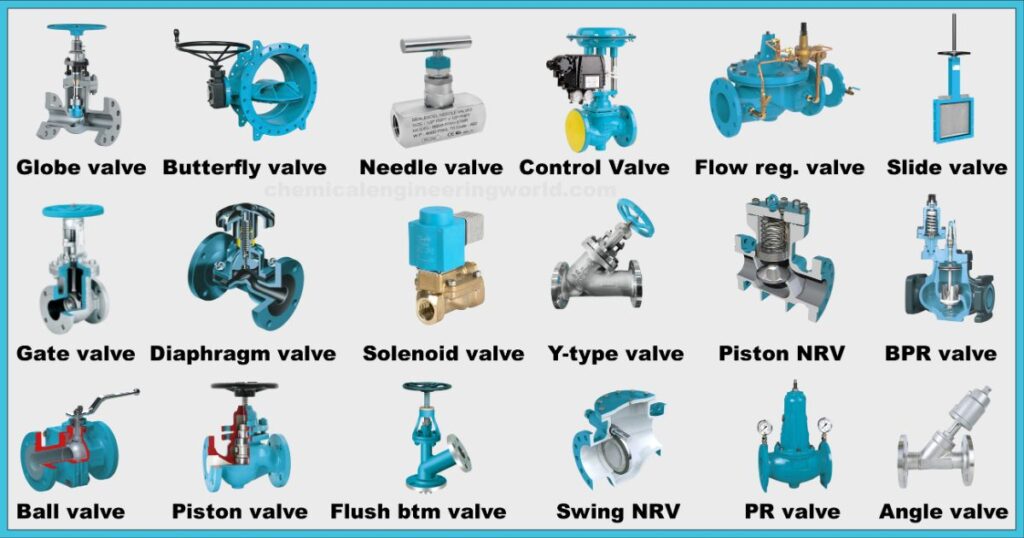
Types of Valves
1. Globe valve: ( Types of valves )
Globe valve: It operates by reciprocating action of disc or plug. The disc or plug moves to or away from the seat thereby stopping the fluid flow or allowing the fluid to flow. The disc or plug seats over the valve seat. The valve seat can be removable. Pressure drop in the globe valve is high.
The valve can be manually operated or power actuated or automatic actuated. Globe valves are available from 12 mm to 300 mm size and their temperature and pressure limits are 550 C and 150 kg/cm2 respectively. Material of construction for globe valve is carbon steel, stainless steel, ductile iron, brass, and other corrosion resistant alloys.
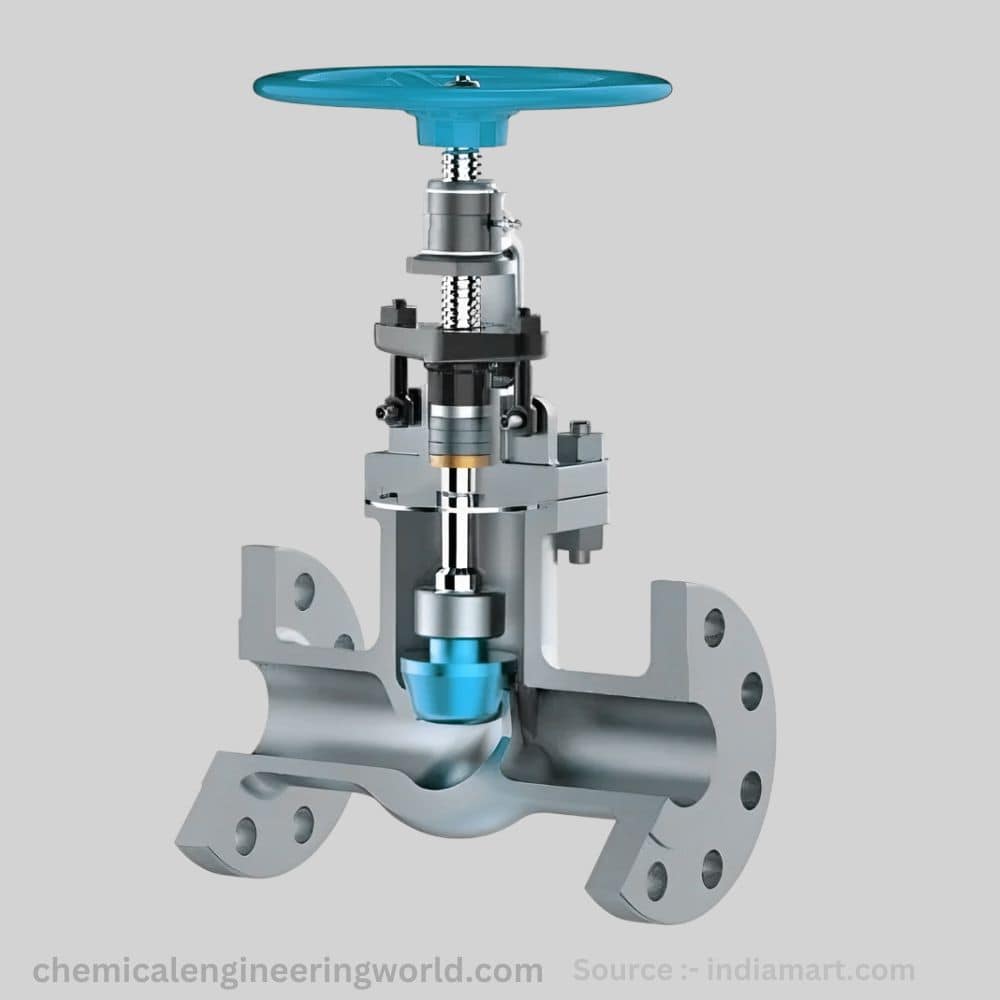
2. Gate valve: ( Types of valves )
Gate valve: Gate valve functions by
the reciprocating action of disc in its body. It can have a single disc or
double disc. It is used for shut off operation. In double disc valve shut off
is good.
Gate valve can have rising or non-rising stem. Gate valves are available in
various sizes ranging from
12 mm to 300 mm and even more. Gate valve is light in weight, economic and
offers low pressure drop. Conduit type gate valve is common in chemical process
industries because it gives accurate flow control. Gate valve can be used upto
20 kg/cm2 and upto 675°C. Material of construction for gate valve is cast iron,
carbon steel, stainless steel, ductile iron, bronze, nickel alloys etc.
Rotating disc type gate valve with quick action lever actuator.
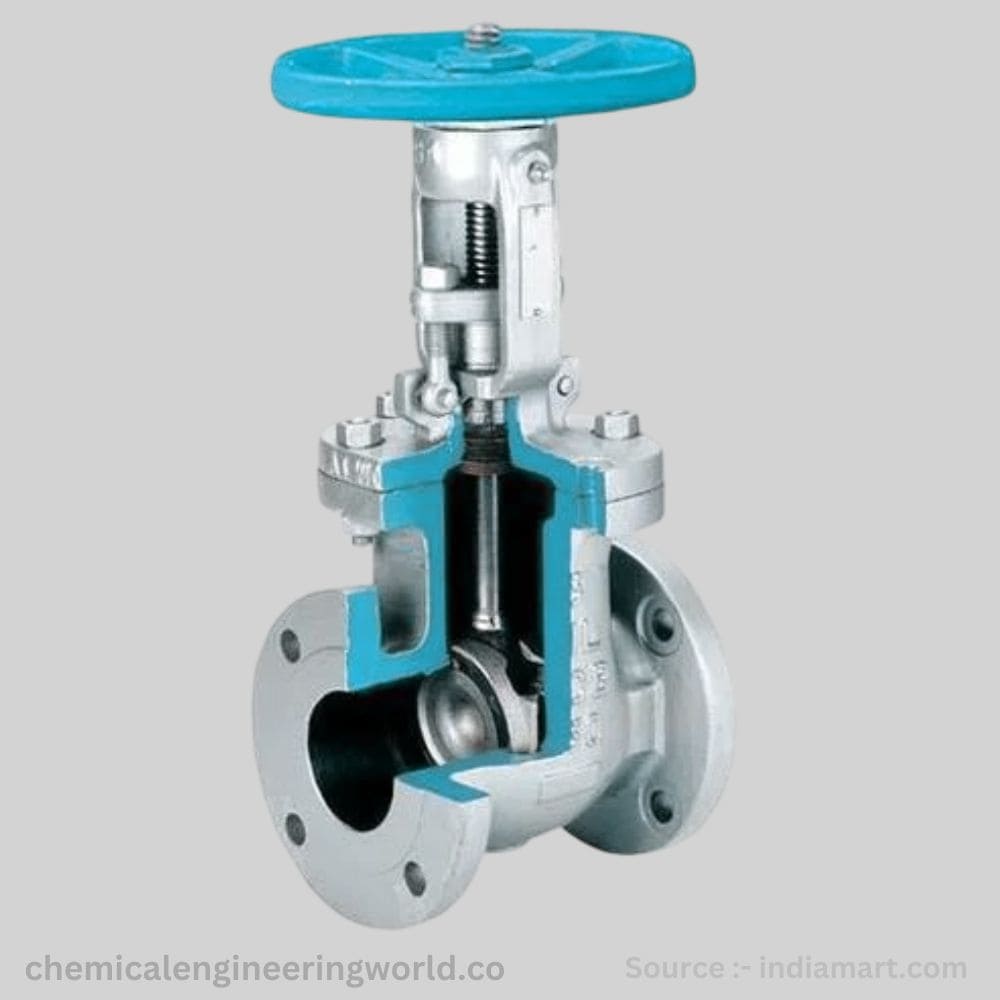
3. Ball valve: ( Types of valves )
Ball valve: Ball valve has a spherical plug. The spherical plug is a controlling element. They are widely used in chemical process industries. It is used where throttling and shut off combination is required. It offers good flow characteristics. Ball valve consists of a two way globe and the ball rotates between resilient seats. It is compact and requires low maintenance and no lubrication. It is available in venture pattern, reduced and full port patterns. By giving a quarter turn to the ball, the valve can be closed or opened. The valve does not give good throttling. It can be available in size from 6mm to as large as 900mm. It can be used for pressures upto 500 kg/cm and temperature upto 300°C.
Full port ball valve is shown below.
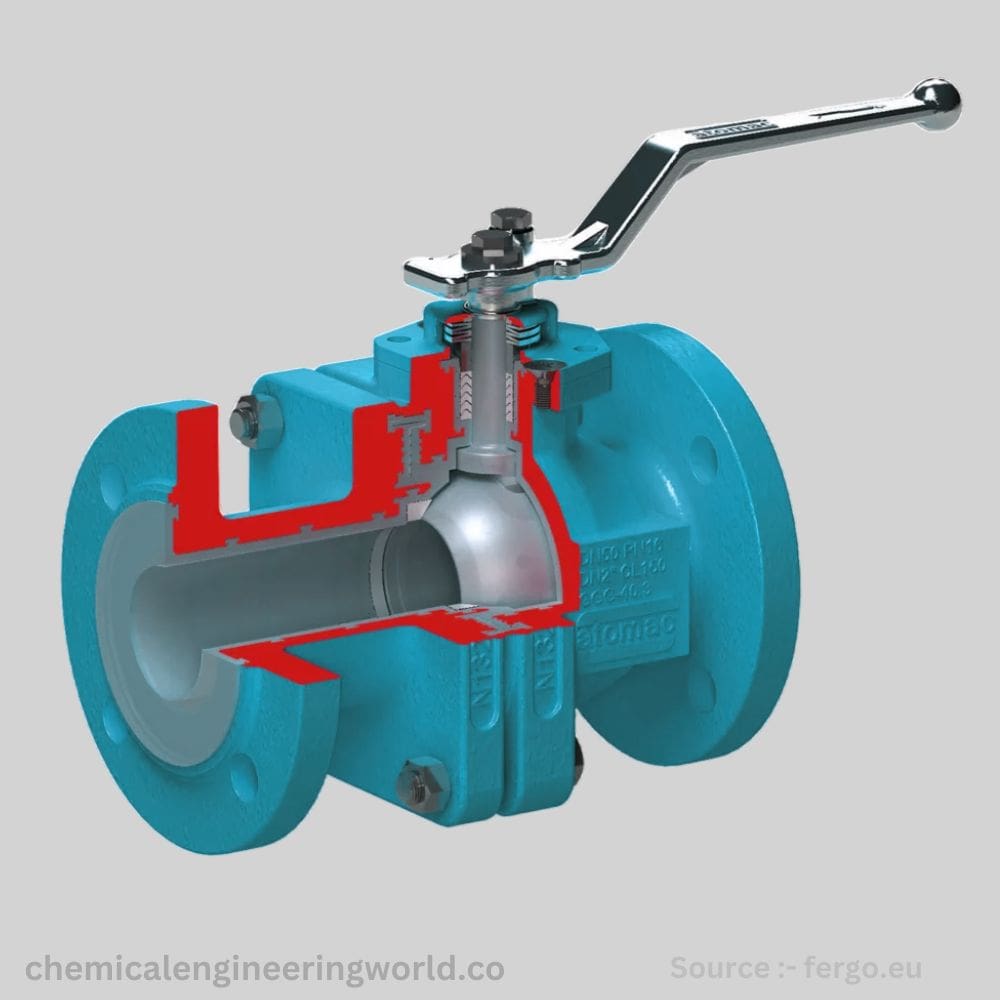
4. Butterfly valve: ( Types of valves )
Butterfly valve: In butterfly valve the controlling element is a disc called as blade, vane or flapper, which rotates in horizontal or vertical direction and allows the fluid to flow. Butterfly valve is suitable for throttling or on-off operation at low pressure drop.
It is economic, easy to install and does not allow the solids to build up. Butterfly valve can be either screw type or of wafer type. Its operation can be manual, power, or automatic Water type butterfly valve is shown. Butterfly value can be used for vacuum operations or pressures upto 80 kg/cm2. It is available in size ranging from 50mm to as large as 900 mm. The blade or flapper of a Butterfly valve can be made from rubber, neoprene, chloro sulphonated polyethylene etc.
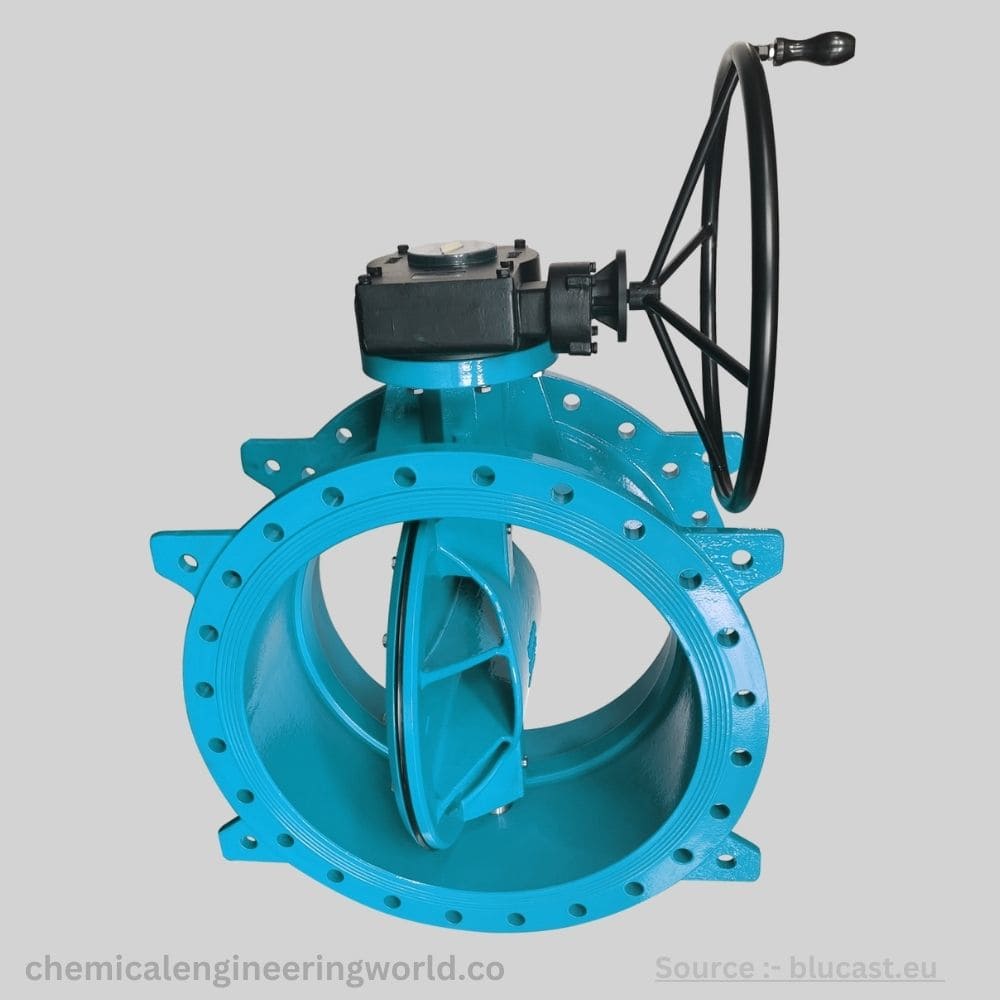
5. Diaphragm valve: ( Types of valves )
Diaphragm
valve: Main parts of a diaphragm valve are,
body, bonnet and a flexible diaphragm. Diaphragm is lifted up when the valve is
opened and the diaphragm is tightly pressed against the bottom of valve, when
it is closed. Diaphragm valves are classified as: 1. weir type and 2. Straight
through type.
In weir type diaphragm valve relatively low thrust and shut off stroke is
required. This gives longer life for diaphragm. Weir type diaphragm valve is
commonly used.
Straight through type diaphragm valve is suitable
for handling slurries, viscous liquids, fibrous suspensions. In some diaphragm
valves, the diaphragm is not fully lifted up of the weir, so accurate control
of small flow becomes possible. Diaphragm is made either from rubber, neoprine
or buna. It is avalable in size 3 mm to as large as 600 mm. It can be used upto
20 kg/cm2 pressure and 2200 C temperature.
Material of construction for diaphragm valve can be cast iron, stainless steel,
and corrosion resistant alloys.
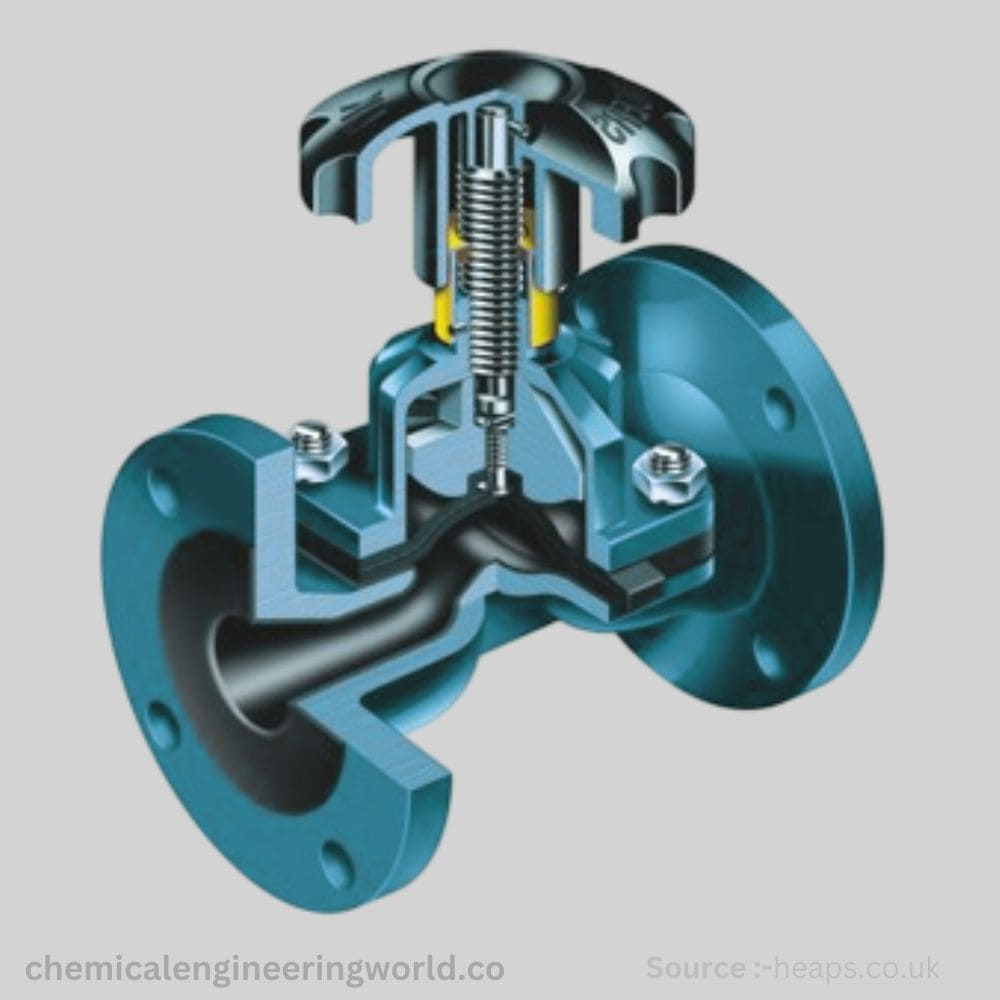
6. Plug valve: ( Types of valves )
Plug valve: Plug valve is used for on-off service. It is the oldest type of valve. The main parts of a valve are body, plug and cover. Plug can be cylindrical or tapered. The plug has a slit cut in it to allow the fluid to flow. It provides a straight line and can be opened or closed just by giving a quarter turn.
Plug valve can be made to have one or more openings to change the direction of flow. It can be lubricated or non-lubricated type.
Plug valves have the advantages such as quick action, easy operation, minimum space for installation, light in weight and high capacity. It can be used for slurry handling and pulp handling. Valves with spherical plug are useful in automatic process control operations.
Plug valve can be fabricated from cast iron, stainless steel, copper, alloys, nickel alloys and other corrosion resistant alloys. Tapered plug valve without lubrication is shown.
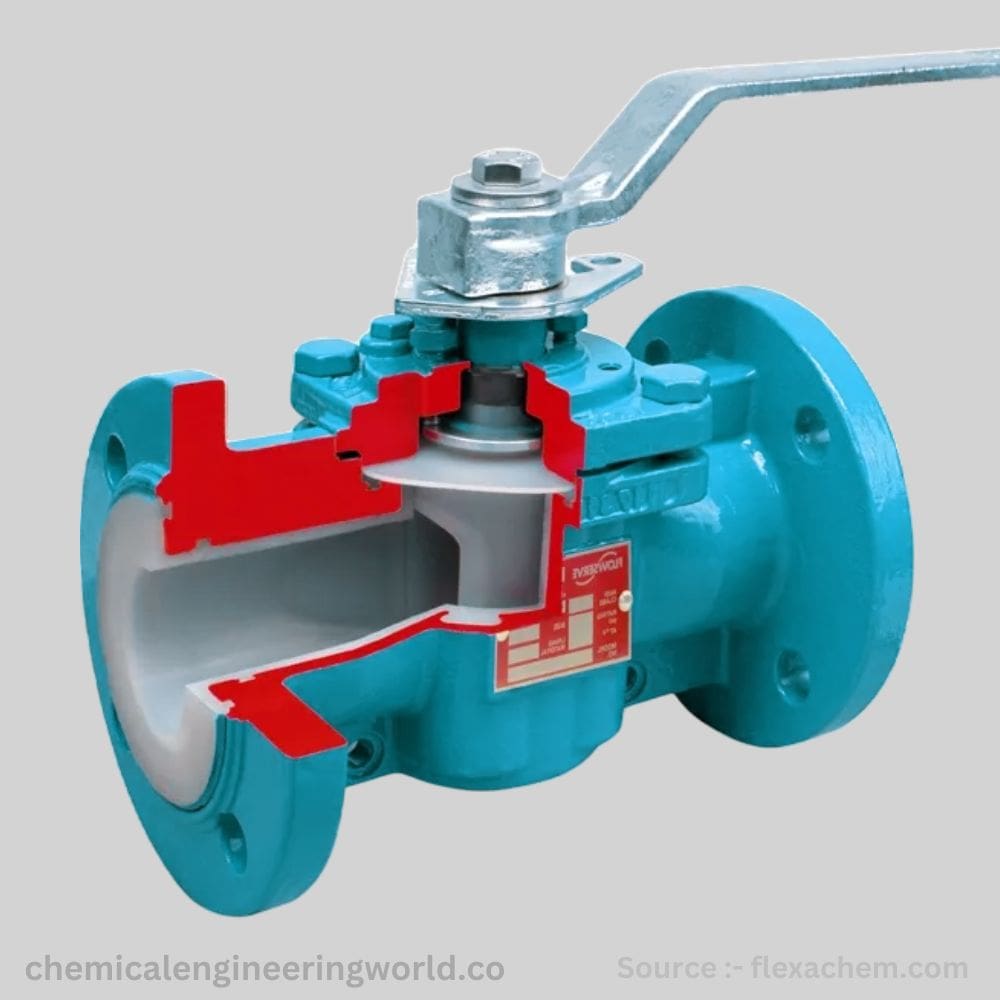
Lubricated plug valve is used in oil industry while non-lubricated valve is preferred where contamination is to be avoided. Plug valves are available in size from 6mm to as large as 750 mm.
Lubricated plug valve can have high pressure rating upto 300 kg/cm2 and temperature rating upto 300°C. Single port valve with lubrication arrangement is shown.
7. Needle valve: ( Types of valves )
Needle valve: Needle valve contains a plug. The plug is tapered and sits very accurately into the seat. The flow rate is regulated by the annular space between the tapered body of the plug and the seat. It is used for small and accurate flows. The valve size varies from 3mm to 25mm and can be used in the temperature and pressure range upto 260 C and 650 kg/cm respectively. Needle valves are used for controlling actuating air or hydraulic fluid, for reducing pressure fluctuations. Material of construction for needle valve can be bronze, brass, stainless steel etc.
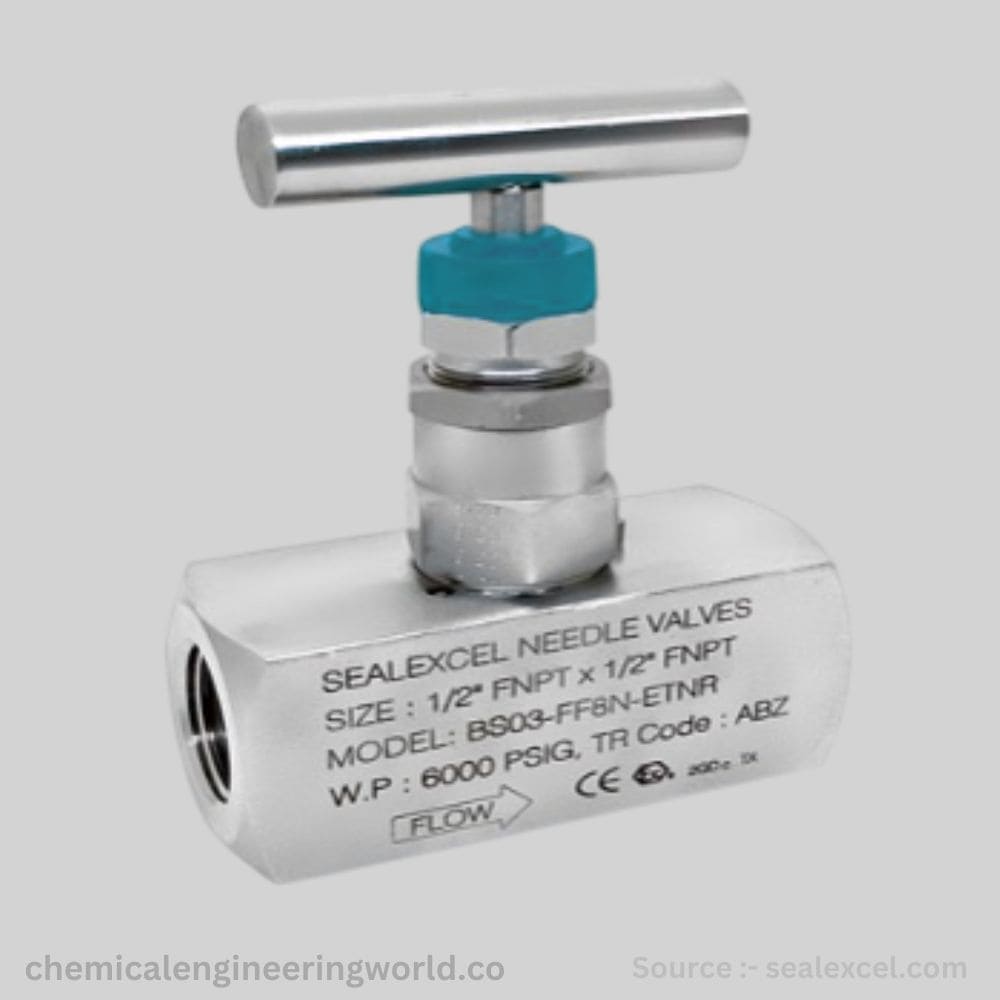
8. Angle valve: ( Types of valves )
Angle valve: It is similar to globe valve. In angle valve
the inlet and outlet ends are at 900 to each other.
The axis of the stem is in line with one of the
ends. Angle valve gives lower pressure drop and less pipe fittings in the piping system. Angle valves can be used
for corrosive fluids. It can have a
single body or split body.
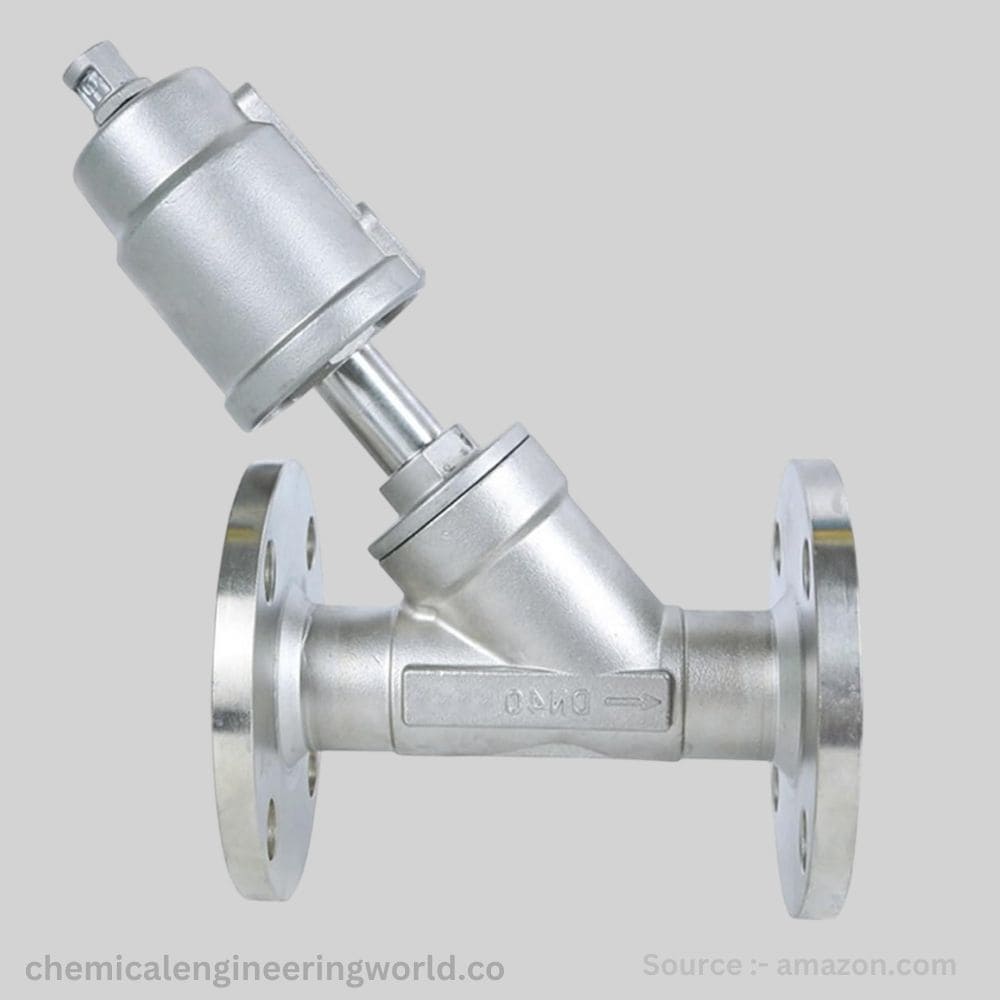
9. Pinch valve: ( Types of valves )
Pinch valve: It can be used for on-off and throttling operations.
The valve has a sleeve which is replaceable. It has low maintenance cost, low
pressure drop and low initial cost. It can be used for handing slurries. Its
operation mechanism is completely isolated from fluid. This eliminates problems
of corrosion and contamination.
Sleeves can be made of rubber or plastic. Pinch valve can be designed for
pressures upto 20 kg/cm2, and temperature upto 250°C. Pinch valve is
not suitable for vacuum operation.
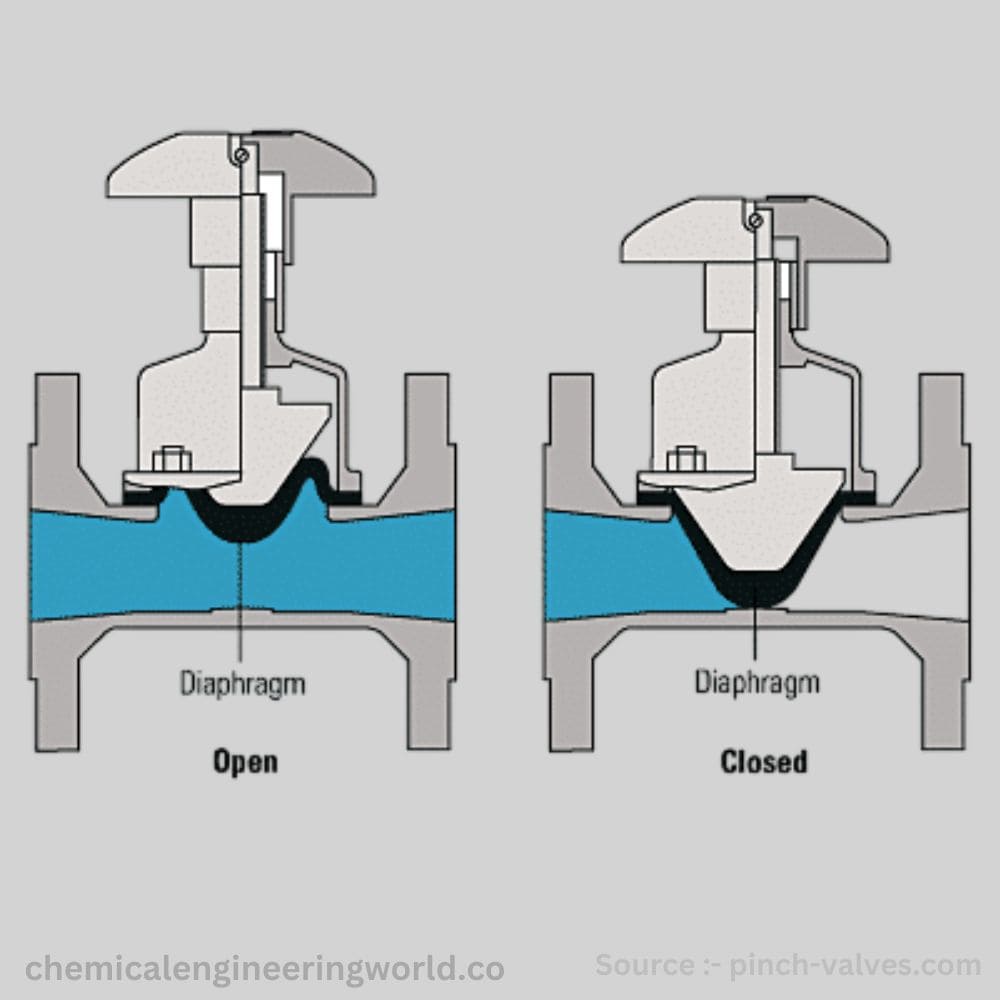
10. Slide valve: ( Types of valves )
Slide valve: It is used for controlling low pressure flow of gases, liquids, suspensions and fluidized solids. It has two parallel body seats between which the disc slides. The disc acts as a gate, Pressure chop offered by slide valve is very low. It is available in size ranging from 50 mm to as large as 1500 mm. It can be used for pressures Uplo 25 kg/cm2 and temperature upto 650°C.
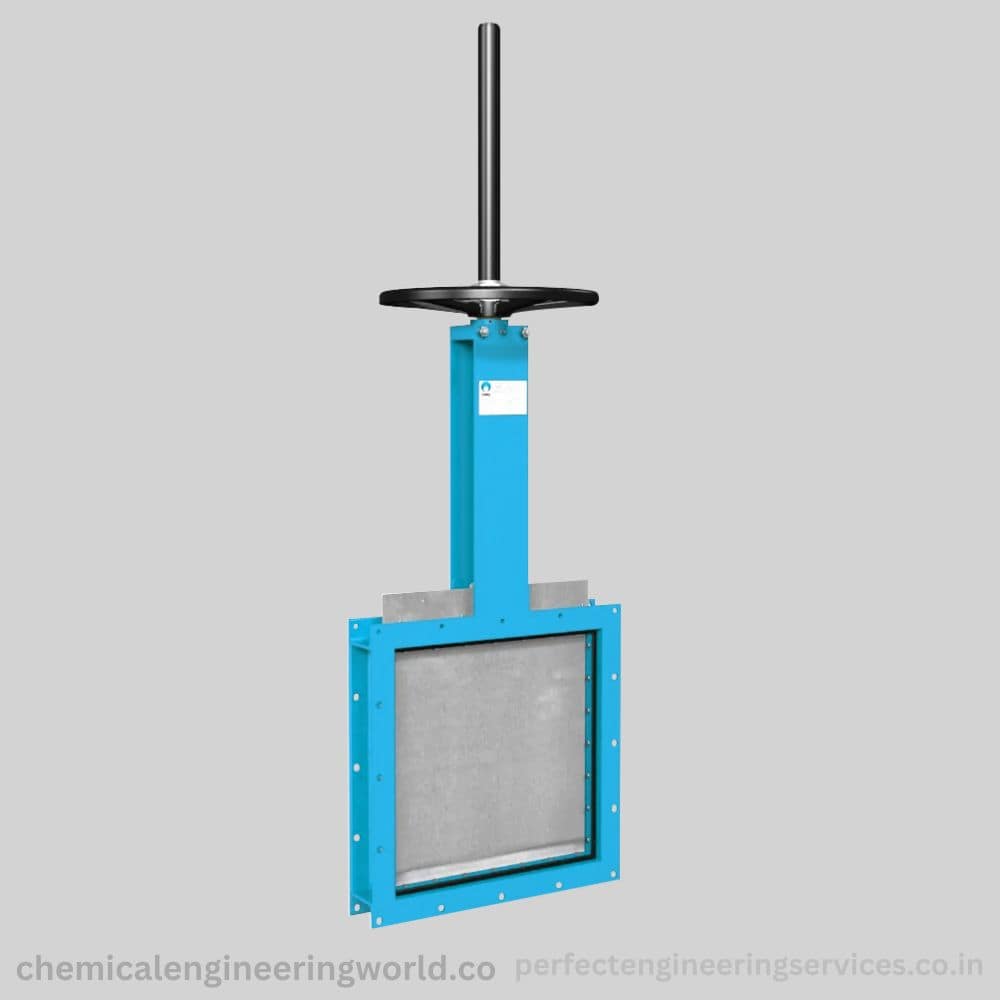
11. Flush bottom valve: ( Types of valves )
Flush bottom valve: It has wide applications in process industries for discharging materials from tanks. It is available in size ranging from 25 mm to 150 mm. It can be used for discharging dry solid material from bins.

12. Solenoid valve: ( Types of valves )
Solenoid valve: It is a control valve. Solenoid is applied to sliding stem, on-off globe valves.
It is used for emergency shut off service requirements. It is available in size ranging from 1 mm to 100 mm. It can be used for absolute vacuum to very high pressures in the range of 650 kg/cm2 and temperatures as low as-250°C to 800°C. Material of construction for solenoid valve can be cast, iron, stainless steel, aluminum, plastic brass etc. Solenoid valves find wide applications in cryogenic operations.
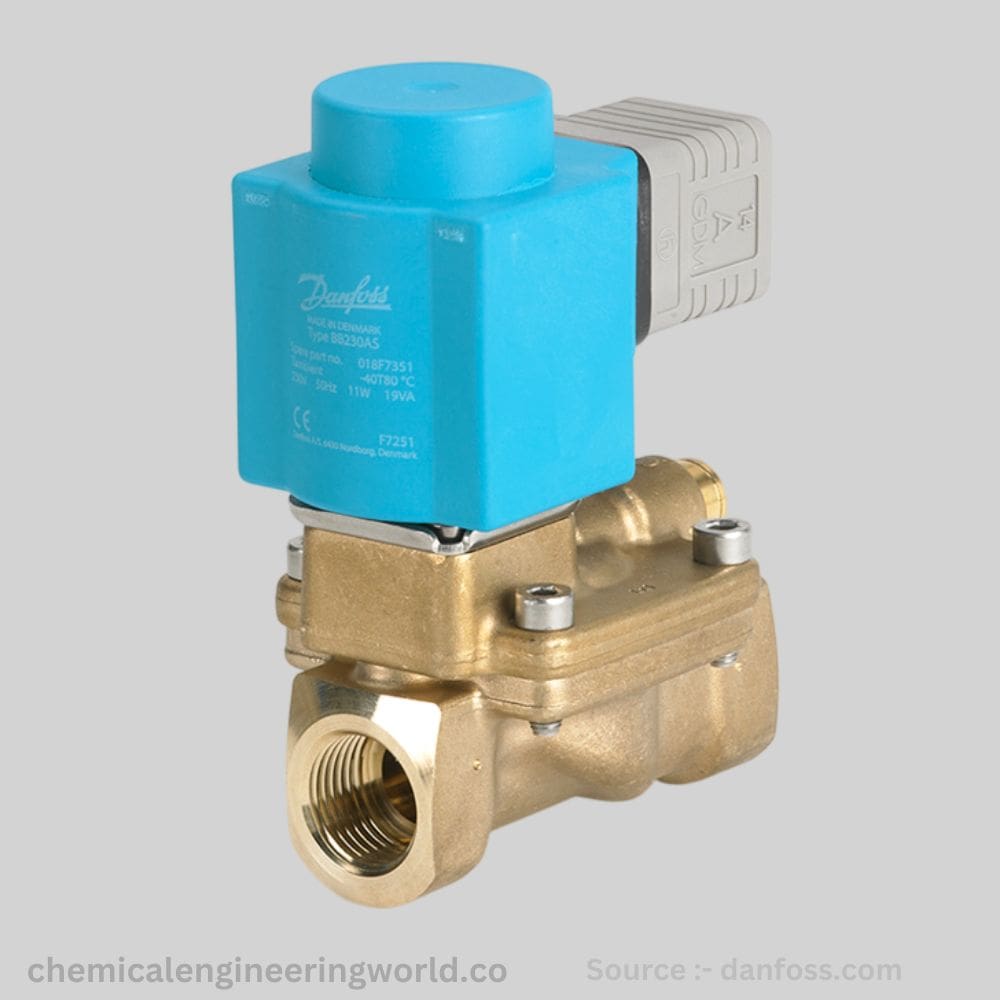
13. Control Valve: ( Types of valves )
Control Valve: It is necessary for automatic process control system. It can be used either for controlling level, flow rate, temperature, pressure etc. The selection of control valve involves its operation mechanism, process conditions as well as requirements. It can be manual or power operated.
The main parts of a control valve are actuator and body. The signals from the process are received by the actuator and accordingly it closes or opens the valve. Control valves can be single plug balanced globe type or double plug balanced globe type or having diaphragm or butterfly design. Single plug type valve gives better sealing. Pneumatic diaphragm and spring actuator is most commonly used.
Control valve can have size ranging from 3mm to 500 mm and can be used for pressures upto 4000 kg/cm2 and temperatures-250°C to 800°C. Material of construction for control valve can be cast iron, carbon steel, stainless steel, monel, nickel alloys, hastelloy and even plastic also.
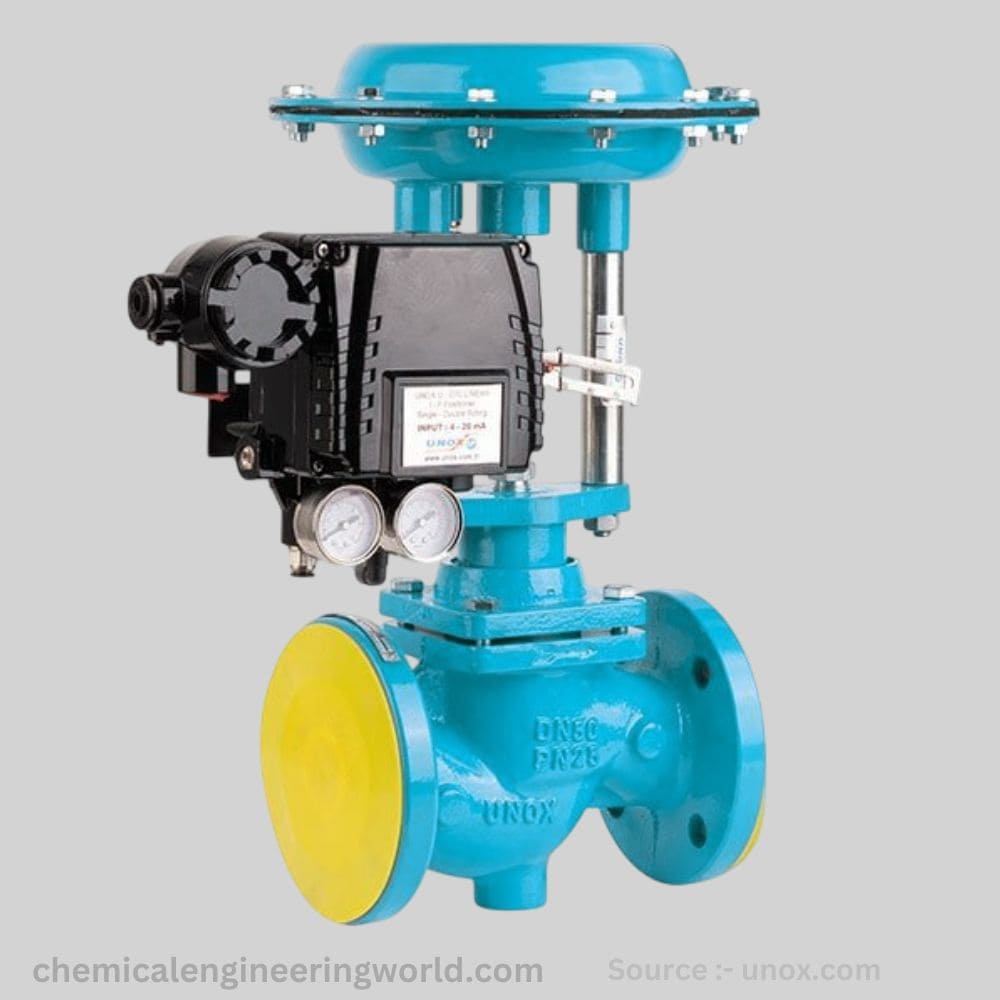
14. Flow regulating valve: ( Types of valves )
Flow regulating valve: In a flow regulating valve a constant flow rate is maintained irrespective of any changes in the line pressure. As the pressure changes on either side of the stream, the diaphragm actuates a spring loaded valve. The spring loaded valve opens or closes maintains the flow at constant rate.
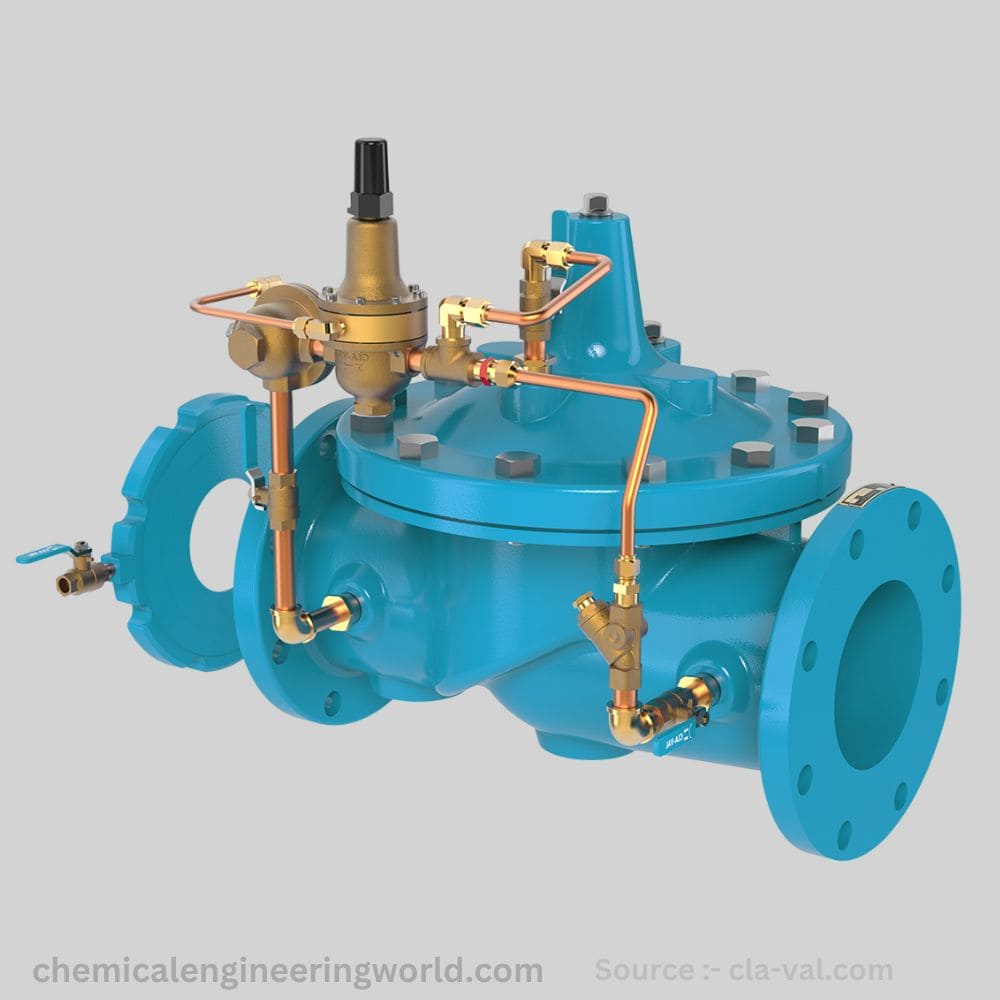
15. Back pressure regulating valve: ( Types of valves )
Back pressure regulating valve: It has a spring loaded disk or piston. The disc or piston lifts up and opens the valve whenever the pressure in the system exceeds the pressure exerted by the spring. A diaphragm transmits the pressure to the disc or piston. It has a design similar to relief valve.
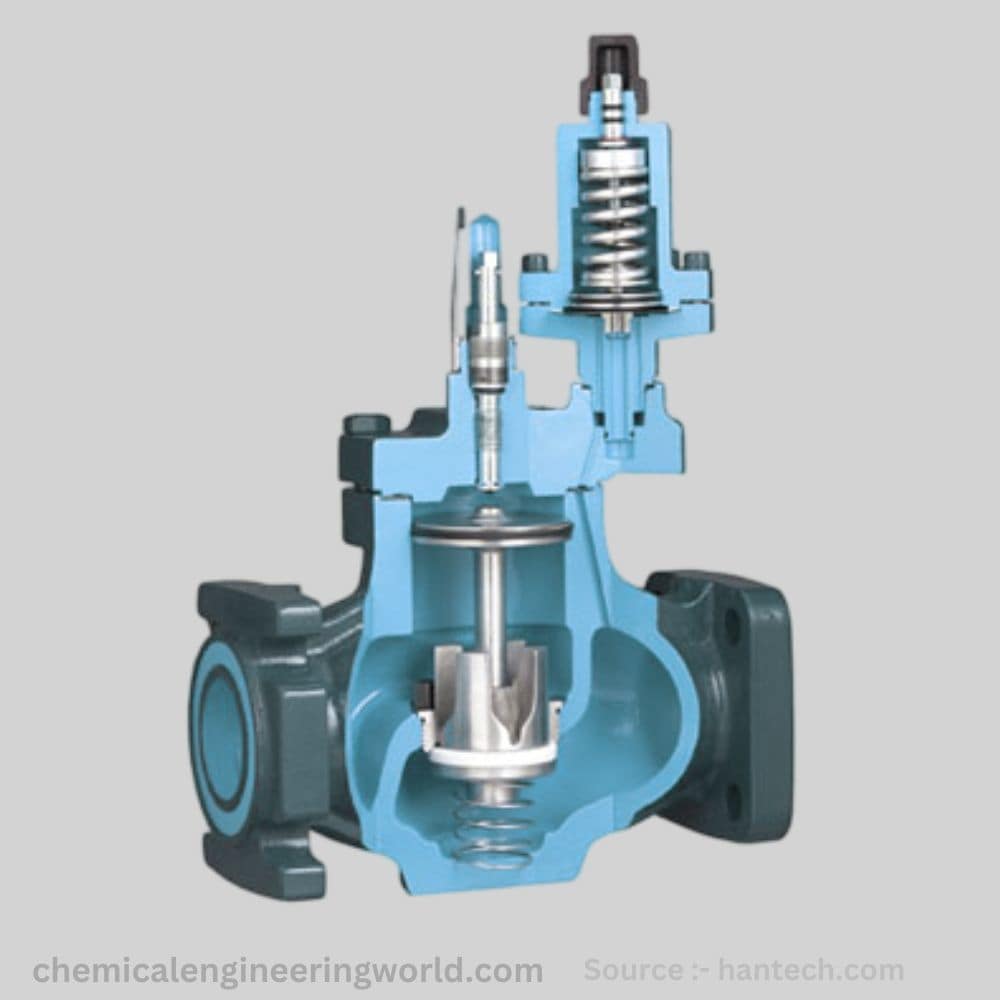
16. Y-type valve: ( Types of valves )
Y-type valve: In this valve the orifice is approximately at 42 to the path
of flow. Y-type valve
offers low pressure drop and good throttling
condition.
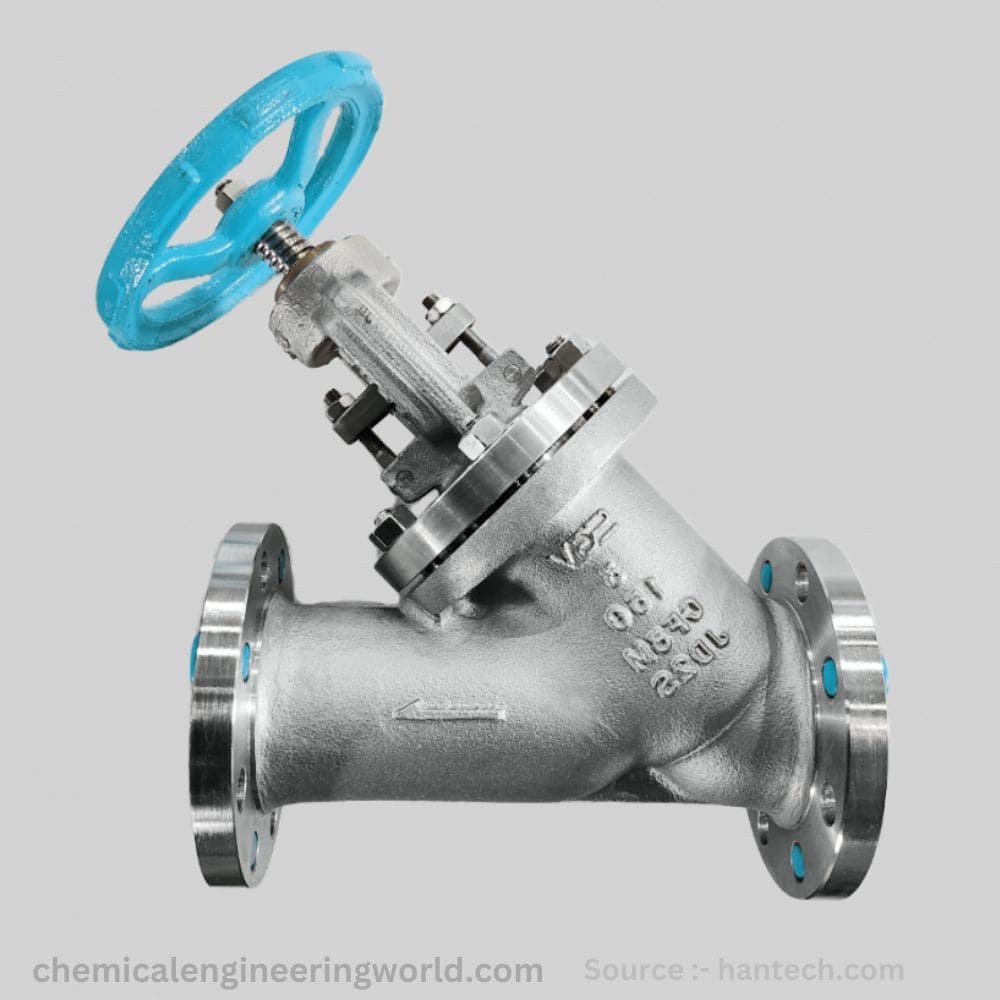
17. Piston valve: ( Types of valves )
Piston valve: It is used for hydraulic systems, air pressure control etc.
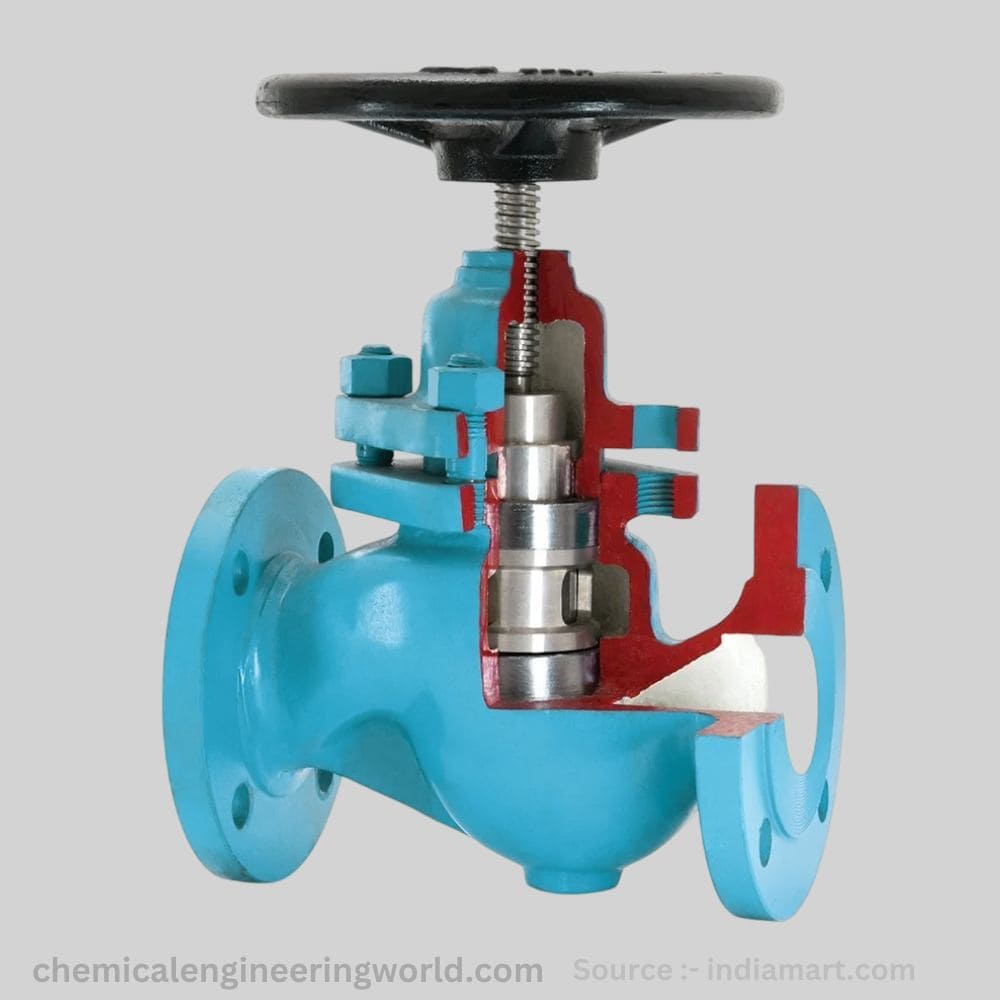
18. Pressure regulating valve: ( Types of valves )
Pressure regulating valve: It is used for regulating steam pressure if it exceeds the desired level.
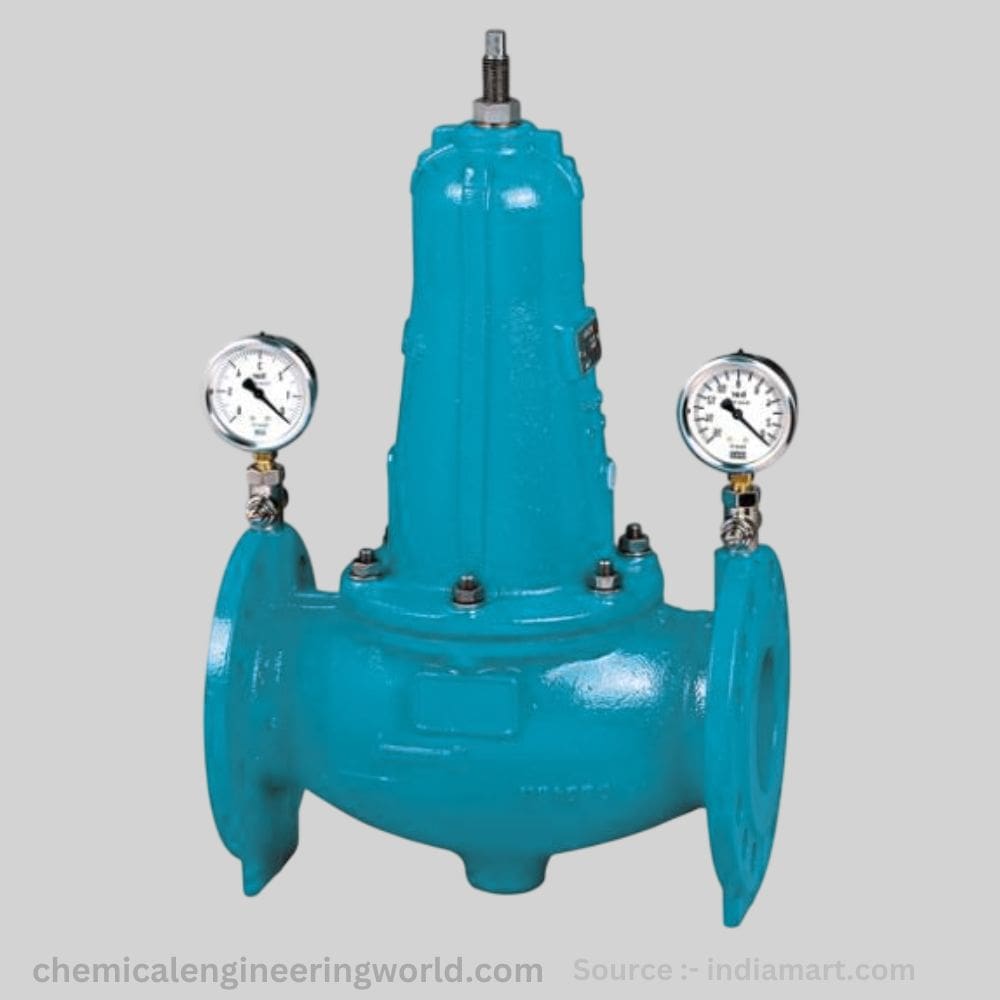
19. Check valve: ( Types of valves )
Check valve: There are three types of check valves:
A. Swing check valve B. Piston check valve C. Lift check valve
It is used to prevent flow reversal. Fluid pressure keeps the valve open. It is closed either by back pressure of fluid or by weight of the check system.
A. Swing check valve: is used for low fluid velocities and where flow reversal is not frequent. Swing check valve can be used on the discharge side of pressure relief valve.
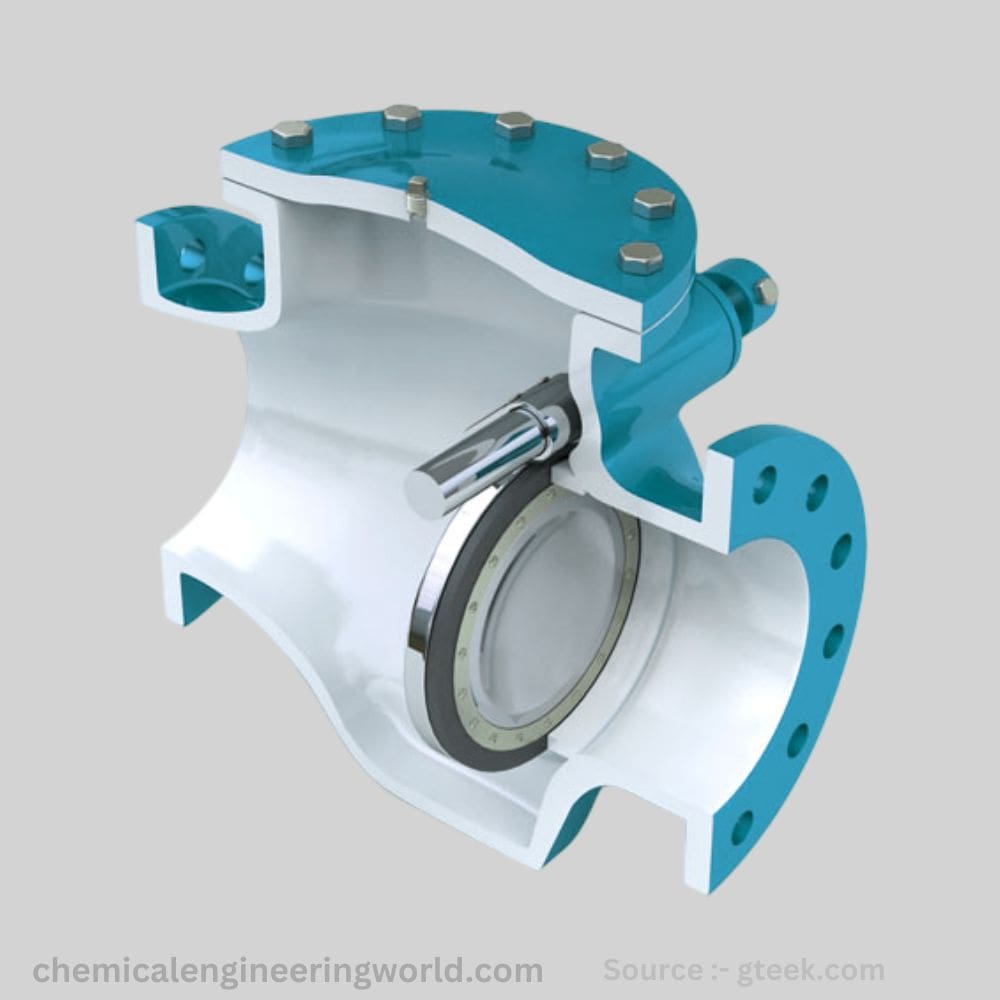
B. In lift check valve: a disc, piston or a ball is used as a checking device. It can be installed in horizontal or vertical position. The fluid pressure raises or closes the disc or ball. Lift check valves are suitable where pressure drops are high. It is suitable for small pipelines.
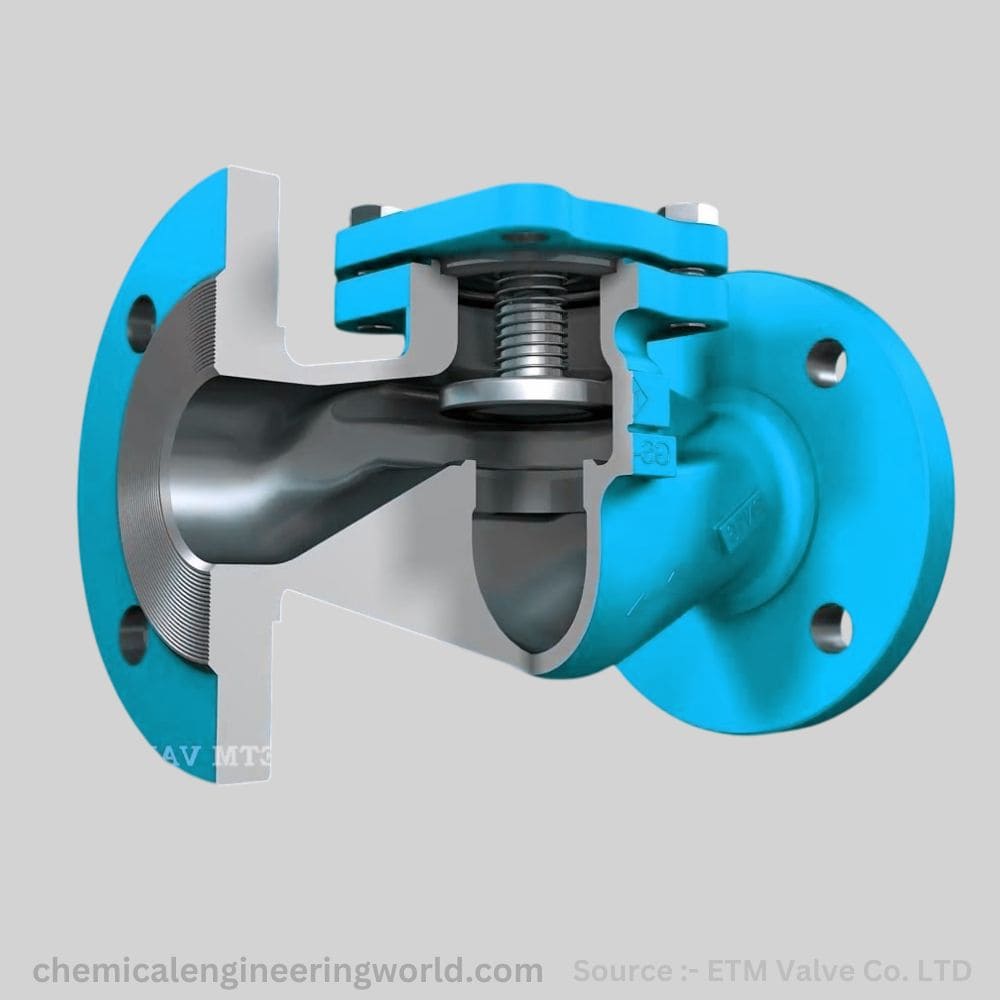
C. Piston check valve: is stem operated. It can be operated manually or by a motor. Check valves are available in sizes ranging from 6mm to 600 mm. They can be used for pressures upto 170 kg/cm2 and temperatures upto 675°C. Material of construction for check valve can be cast iron, steel, ductile iron, and corrosion resistant alloys.

Reference:- wermac engineeringlearn





























